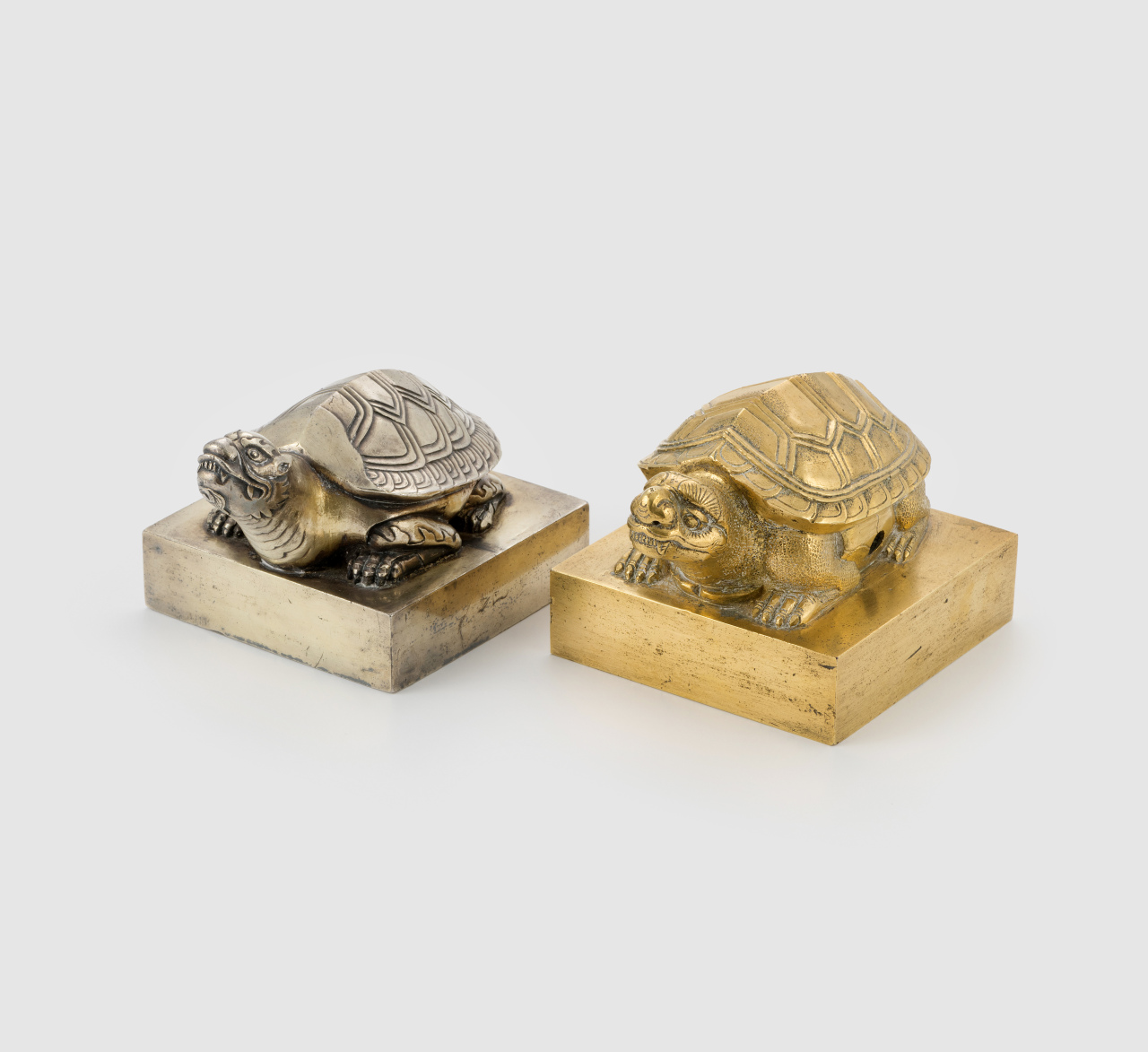 |
Daegunjubo (left) and the Royal Seal of King Hyojong (National Palace Museum of Korea) |
The Cultural Heritage Administration on Wednesday unveiled two pieces of Korean cultural heritage previously held in the US -- Daegunjubo and the Royal Seal of King Hyojong -- at the National Palace Museum of Korea.
“Three years ago, the official seal of Queen Munjeong, as well as a seal of King Hyeonjong, which were illegally taken to the US, were repatriated to Korea. We had to forcefully bring them back at the time. But this time it is different because these seals were donated,” Cultural Heritage Administration head Chung Jae-suk said at a press event Wednesday.
According to the administration, Lee Dae-soo, 84, a Korean American who lives in New Jersey, donated the two seals in December. Lee had purchased the seals at auctions in the US in the late 1990s.
“Throughout his life, my father firmly believed that Korean relics of historical importance should be returned to Korea, and he looked for an opportunity to do so,” Lee Sung-joo, Dae-soo’s son, said at the press conference.
Daegunjubo is a 7.9-centimeter tall silver seal that was stamped on diplomatic and administrative documents as a symbol of state authority. The seal has a turtle-shaped handle on its body. The silver seal was created in 1882 and began to be used on documents from 1883 to 1897.
The Royal Seal of King Hyojong is a gold seal also with a turtle-shaped handle that was created in 1740 to commemorate King Hyojong, who reigned from 1649 to1659.
A total of three seals were created to honor King Hyojong. The first was created right after he passed away in 1659. The second and third seals were created in 1740 and 1900, respectively. Of the three royal seals of King Hyojong, only the seal created in 1900 had been held by the National Palace Museum of Korea, and the whereabouts of the seal created in 1659 remain unknown.
Kim Hyoung-keun, the publisher of Modern Buddhism of America, and Shin Young-geun, the former secretary-general of the Overseas Korean Cultural Heritage Research Institution, played crucial roles in the return of the seals, providing information related to the missing seals and adjusting ways to donate them, according to the CHA.
Seventy-three of the 412 royal seals that are known to have been made during the Joseon era are still unaccounted for.
The Cultural Heritage Administration plans to create and distribute brochures and videos about the missing or stolen pieces to raise awareness and encourage people in possession of the artifacts to voluntarily return them via donation. “We will also advertise about missing heritage at Times Square (in New York) with LG,” Chung added.
The newly returned royal seals will be available for viewing on the second floor of the National Palace Museum of Korea from Thursday until March 8.
By Song Seung-hyun (
ssh@heraldcorp.com)








